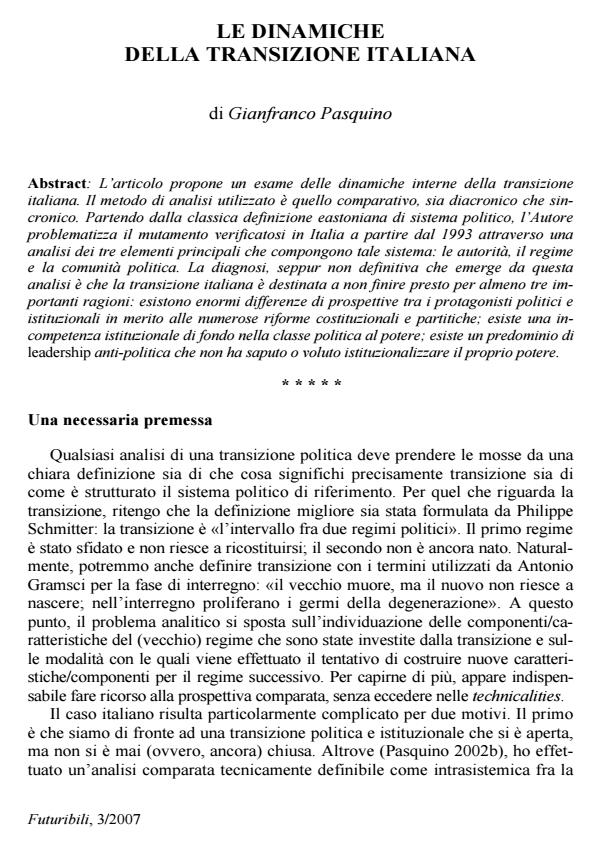Le dinamiche della transizione italiana
Titolo Rivista FUTURIBILI
Autori/Curatori Gianfranco Pasquino
Anno di pubblicazione 2008 Fascicolo 2007/3
Lingua Italiano Numero pagine 16 P. 173-188 Dimensione file 177 KB
DOI
Il DOI è il codice a barre della proprietà intellettuale: per saperne di più
clicca qui
Qui sotto puoi vedere in anteprima la prima pagina di questo articolo.
Se questo articolo ti interessa, lo puoi acquistare (e scaricare in formato pdf) seguendo le facili indicazioni per acquistare il download credit. Acquista Download Credits per scaricare questo Articolo in formato PDF

FrancoAngeli è membro della Publishers International Linking Association, Inc (PILA)associazione indipendente e non profit per facilitare (attraverso i servizi tecnologici implementati da CrossRef.org) l’accesso degli studiosi ai contenuti digitali nelle pubblicazioni professionali e scientifiche
The dynamics of Italian transitionThe method used by the author to analyse the internal dynamics of the Italian transition is comparative, both diachronic and synchronic. Starting from the classical Eastonian definition of a political system, the author focuses on the changes that have occurred in Italy since 1993 with regard to the three main elements comprising that system: the authorities, the regime and the political community. The provisional diagnosis emerging from the analysis is that the Italian transformation is not likely to finish any time soon, for at least three reasons. First, there are huge differences of perspective among all political and institutional protagonist with regard to a wide range of possible constitutional and party reforms. Second, the politicians in power are characterised by basic institutional incompetence. Third, there is a predominant anti-political leadership which has been unable or unwilling to institutionalise its own power.
Gianfranco Pasquino, Le dinamiche della transizione italiana in "FUTURIBILI" 3/2007, pp 173-188, DOI: